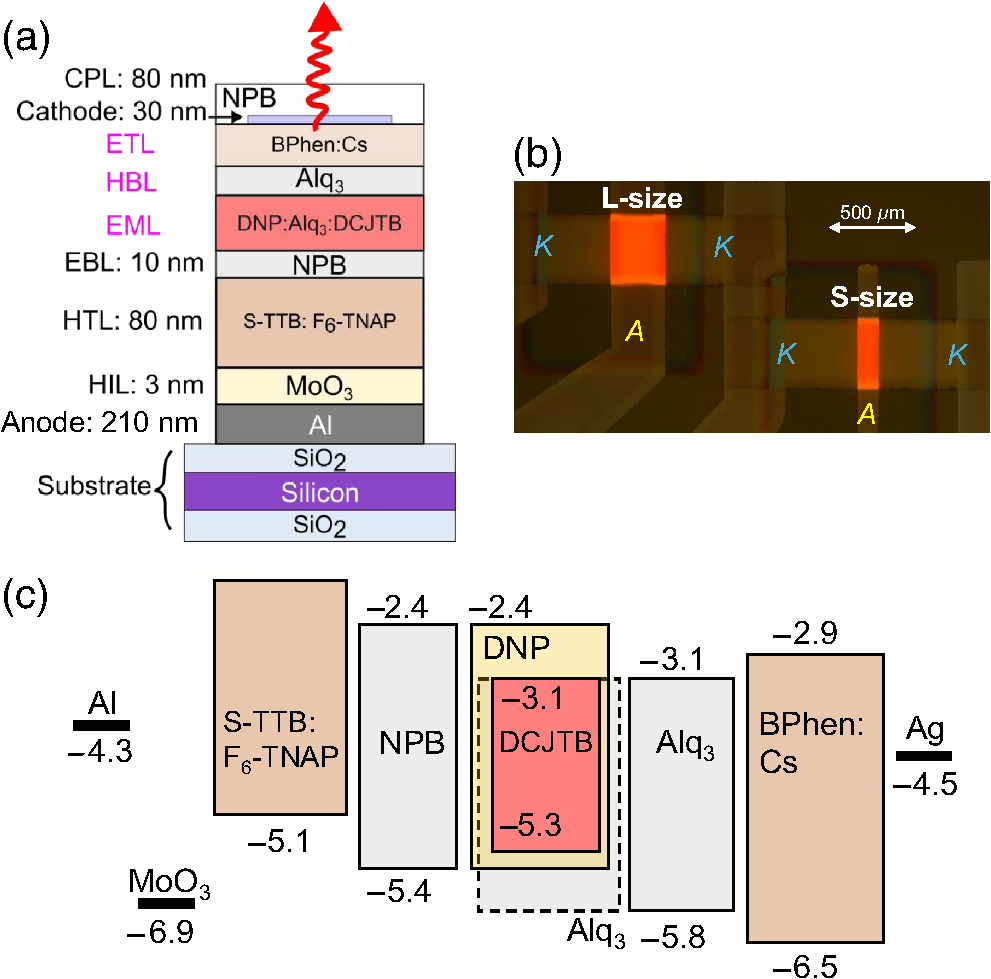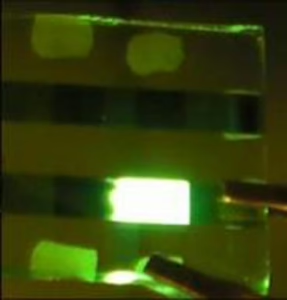Researchers at the University of St Andrews and Cambridge University have achieved a breakthrough that could reshape wireless communication, demonstrating OLEDs capable of transmitting data at record speeds of 4 gigabits per second. The achievement shatters previous assumptions about OLED speed limitations and positions the technology as a viable alternative for high-speed wireless communication.
The research team, led by Kou Yoshida at St Andrews and Harald Haas at Cambridge, achieved unprecedented data transmission rates using OLEDs based on dinaphthylperylene (DNP), one of the most stable organic semiconductor materials available. Their optimized devices reached 4.0 Gbps over a 2-meter link, with a coded data transmission rate of 3.7 Gbps after accounting for error correction overhead. Perhaps more remarkably, they maintained 2.9 Gbps transmission over a 10-meter distance—matching previous OLED speed records but over a link 40 times longer.
“OLEDs are already mass-produced as high-resolution displays, featuring small pixel sizes and high contrast ratios,” the researchers note. “Our vision is to use OLEDs for display-to-display communication or integration of VLC functions into everyday objects.”
OLEDs have long been considered unsuitable for high-speed communication due to low charge mobility in organic materials. Previous OLED-based VLC systems struggled to exceed gigabit speeds, with the previous single-OLED record standing at 2.85 Gbps over just 0.25 meters.
The breakthrough came through strategic material selection and careful device optimization. The team chose DNP for its exceptional stability—with a reported operational lifetime (LT50) of approximately one million hours at moderate current densities, among the best available for OLEDs.
“For high-speed VLC, fast and bright OLEDs are required,” the researchers explain. “However, there is a trade-off between speed and brightness. The effect of transmission distance on data rate also needs to be considered as the amount of light collected at the receiver decreases with increasing distance.”
The research systematically addressed these trade-offs through multiple device configurations, testing different layer thicknesses and device sizes. Their top-emitting OLEDs incorporated carefully optimized electron transport layers, hole-blocking layers, and emission layers to balance speed and light output.

Key findings revealed that both bandwidth and brightness are essential for high data rates. The team achieved electrical bandwidths up to 390 MHz while maintaining bright emission capable of operating at current densities up to 180 A/cm².
“Our results show that the operational stability of OLEDs is important for high-speed operation,” the authors emphasize. The stable DNP-based devices could operate at high driving currents without rapid degradation, enabling the bandwidth improvements necessary for gigabit communication.
The team validated their approach using sophisticated DC-OFDM (orthogonal frequency division multiplexing) modulation over free-space optical links. They employed adaptive bit-loading algorithms to maximize data transmission rates and implemented advanced equalization techniques to compensate for system nonlinearities.
Testing revealed that larger OLED devices, while typically expected to be slower due to increased capacitance, actually achieved higher data rates through improved signal-to-noise ratios from increased light output. The electrical time constants of these devices remained fast enough not to limit communication speed.
The breakthrough positions OLED-based VLC as a serious complement to traditional radio frequency communication systems. VLC offers several distinctive advantages: access to unlicensed spectrum, support for multiple simultaneous data streams, and the ability to piggyback on existing lighting infrastructure without interfering with illumination functions.
The technology has already been incorporated into the ratified LiFi standard IEEE 802.11bb, and a new IEEE task group has formed to develop enhanced light communications standards. This standardization activity suggests accelerating commercialization of VLC technologies.
With OLEDs ubiquitous in smartphones, smartwatches, and televisions, the research opens possibilities for seamless device-to-device communication and integration of high-speed data transmission into everyday objects.
The researchers project continued improvements as OLED technology advances for display and lighting applications. “With synergetic developments in the stability of OLEDs for displays and lighting industries, OLEDs will become increasingly faster, expanding their applications for spectroscopy, communications, and sensing,” they conclude.
The work establishes a clear pathway for further enhancements through improved materials, device engineering, and system optimization. As organic semiconductor stability continues improving and device designs become more sophisticated, even higher data rates and longer transmission distances appear within reach.
Reference
Kou Yoshida, Behnaz Majlesein, Cheng Chen, Harald Haas, Graham A. Turnbull, and Ifor D. W. Samuel. “High-speed organic light-emitting diodes based on dinaphthylperylene achieving 4-Gbps communication.” Advanced Photonics, Vol. 7, Issue 3, May/June 2025. DOI: 10.1117/1.AP.7.3.036005

